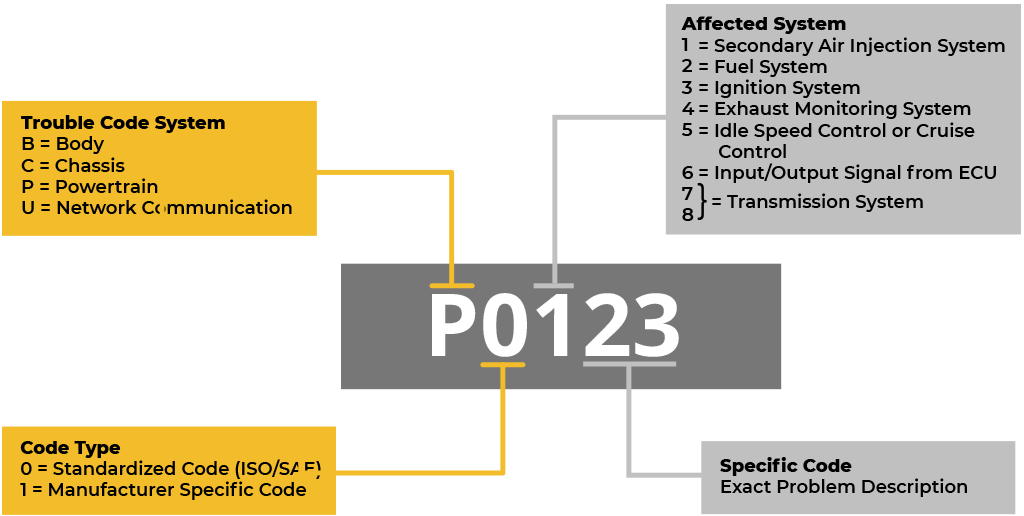
Understanding Subaru OBD-II Trouble Codes U0121
Introduction:
When it comes to maintaining and troubleshooting your Subaru, understanding On-Board Diagnostics II (OBD-II) trouble codes is crucial. These codes provide valuable insights into potential issues with your vehicle. In this comprehensive guide, we’ll delve into one specific trouble code: U0121. By the end of this article, you’ll have a clear understanding of what U0121 means, its possible causes, and how to address it effectively.
Section 1: What is OBD-II?
OBD-II is a standardized system implemented in most vehicles since the mid-1990s. It allows onboard computers to monitor and control various aspects of a vehicle’s performance. This system helps diagnose and identify malfunctions, leading to the generation of trouble codes, which can be retrieved using an OBD-II scanner.
Section 2: The Significance of Trouble Codes
Trouble codes, also known as Diagnostic Trouble Codes (DTCs), serve as a roadmap for diagnosing issues within a vehicle. Each code corresponds to a specific problem, making it easier for mechanics and car owners to pinpoint and resolve issues efficiently.
Section 3: Understanding Subaru Trouble Code U0121
3.1 Definition of U0121
U0121 is a Subaru-specific OBD-II trouble code related to communication errors in the Anti-lock Braking System (ABS) module. When this code appears, it indicates that the ABS module is not communicating properly with the Engine Control Module (ECM).
3.2 Possible Causes of U0121
Several factors could trigger the U0121 trouble code:
3.2.1 Faulty ABS Module
A malfunctioning ABS module might lead to communication breakdowns with the ECM, triggering the U0121 code. Understanding the signs of a failing ABS module is essential for prompt diagnosis.
3.2.2 Wiring Issues
Damaged or corroded wiring between the ABS module and the ECM can disrupt communication and result in the U0121 code. Inspecting the wiring for any visible signs of wear or damage is a crucial step in troubleshooting.
3.2.3 Connector Problems
Loose or corroded connectors can impede communication between the ABS module and the ECM. Careful examination and, if necessary, cleaning or tightening of connectors may resolve the issue.
3.2.4 Faulty ECM
In some cases, a malfunctioning ECM could be the root cause of U0121. Thorough testing and diagnostics are required to determine if the ECM is the culprit.
Section 4: Diagnosing U0121
4.1 Using an OBD-II Scanner
The first step in diagnosing U0121 is to use an OBD-II scanner to retrieve the trouble code and any accompanying codes. This provides a starting point for further investigation.
4.2 Visual Inspection
Conducting a visual inspection of the ABS module, wiring, and connectors can reveal obvious issues. Look for signs of damage, corrosion, or loose connections.
4.3 Advanced Diagnostics
For a more in-depth analysis, specialized diagnostic tools may be required. These tools can provide real-time data and help identify the exact nature of the communication problem between the ABS module and the ECM.
Section 5: Addressing U0121
5.1 Repairing or Replacing the ABS Module
If the ABS module is identified as the issue, repairing or replacing it may be necessary. Consult the vehicle’s service manual for specific instructions on removing and installing the ABS module.
5.2 Repairing Wiring and Connectors
Addressing damaged wiring or connectors involves repairing or replacing the affected components. This step requires precision and attention to detail to ensure a secure and reliable connection.
5.3 ECM Replacement
If diagnostics point to a faulty ECM, replacement may be the most effective solution. Consult with a qualified mechanic or refer to the vehicle’s service manual for guidance on ECM replacement procedures.
Section 6: Preventive Measures
To minimize the risk of encountering the U0121 trouble code and other communication-related issues, regular maintenance is key. Keeping connectors clean, inspecting wiring for damage, and promptly addressing any signs of trouble can prevent these problems from arising.
Conclusion:
In conclusion, understanding Subaru OBD-II trouble code U0121 is crucial for maintaining the health of your vehicle. By familiarizing yourself with the definition, possible causes, and diagnostic procedures outlined in this guide, you can approach the troubleshooting process with confidence. Remember that addressing the U0121 code promptly not only resolves the current issue but also contributes to the overall longevity and reliability of your Subaru.




